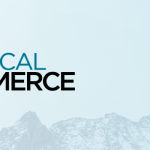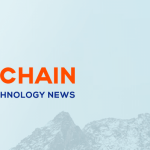Melonie Warfel discusses the challenges organizations are facing when it comes to revenue management and looks at the key areas to optimize.
Life sciences companies overwhelmingly report that revenue management in general and pricing in particular have become much more challenging and complex in recent years. Mounting pricing pressures have led governments to leverage more regulatory levers than ever before, complicating compliance. The gross-to-net bubble continues to grow, placing additional pressure on pricing and requiring more coordination between the back and front office. The industry is facing a second round of patent cliffs amidst growing use of generics and biosimilars that reduce profitability. Global health priorities have also shifted amidst an epidemic, interrupting care plans and supply chains, and forcing new sales and pricing tactics. As a result, many pharmaceutical and medtech companies are rethinking their revenue management tactics and taking the plunge to retool.
One way companies are doing this is by bringing the entire gross-to-net process of pricing and revenue onto a single integrated platform. While these types of innovative projects were historically reserved for the “early adopters,” companies across the board are starting to invest in projects focused on achieving better controls over pricing, rebates and chargebacks to prevent further revenue leakage. No longer viewed as “optional,” these projects are quickly becoming an integral part of the business strategy to maximize growth and profitability.
To better understand the shift currently underway, Model N conducted the 2020 State of Revenue survey.1 The results from this study of 306 revenue management executives clearly identified the challenges organizations are facing when it comes to revenue management and the key areas to optimize.
Revenue management challenges
Pricing complexities lead to revenue leakage
According to the survey, the majority of organizations identified revenue leakage as the most pressing challenge to address in the near term. To better understand why revenue leakage rose to the top of concerns by survey respondents, we must first take a step back to understand how pricing complexities drive revenue leakage in life sciences. The revenue equation should be simple: (price X volume) – rebates = revenue. However, in the dual worlds of pharma and medtech, revenue management is rarely simple.
One drug or device may have different prices for different regions and for different channels and even end markets. For example, government pricing or sales in international markets are going to have vastly different pricing processes, which may be further complicated by rebates and chargebacks that are not consistent across these channels. Based on the complexity of the revenue management process, there are inherent risks of inconsistent pricing execution, unwarranted rebate payments, and deal negotiation that results in untapped revenue opportunities.
To address revenue leakage requires a robust ability to track and run the business at a transactional level. It is crucial for organizations to have visibility into every transaction and how it impacts the top and bottom lines of the business. However, most companies do not have the ability to manage all of these elements as a single process. In fact, typical processes are generally handled by different people, in different departments and using multiple tools. With the front office and back office capabilities on different platforms, it’s difficult to share data and collaborate on successful go-to-market strategies. This siloed scenario makes it impossible to achieve a systematic, repeatable and scalable process to optimize revenue and profitability.
McKinsey2 estimates that 30% of pricing decisions leave money on the table, which results in $1 trillion of revenue leakage annually. Organizations able to find areas to improve see an increase of nearly 9% operating revenue per 1% of price increase. The 2020 State of Revenue study identified key areas that pharmaceutical companies can focus on to maintain and improve profitability, despite these mounting pressures, by capturing revenue leakage.
Five revenue management areas to optimize
According to the study, there are five crucial aspects of revenue management that organizations should prioritize: price, deal, payer, contract, and rebate.
Price management
First, the most effective life science organizations seek to plan prices and discounts for various markets and countries without jeopardizing price in other regions. It’s important to offer the best price available but not to have that price negatively drive down profitability elsewhere in the world.
Especially within medical technology companies, organizations want to keep sales reps within specific price floors and ceilings while applying discounts. It’s important to customer retention to work with the reps and offer discounts when applicable but also critical to avoid over compromising on price and missing out on revenue in other key areas. Finally, top organizations seek to understand the impact their pricing decisions have on regulatory compliance in government price reporting.
Deal management
It’s also important for life science organizations to have deal management processes, from RFP or tender to negotiated deals and operational excellence in contracting, pricing and rebating.
The most successful organizations are implementing systems to handle complex approvals that involve many signatories and multiple steps. Having a system equipped to handle such processes reduces error and improves efficiency and the process for both organization and partner.
Similarly, it’s crucial to enable partner access to the quote and deal process and to permit such accessibility accordingly. By allowing the partner to have transparency throughout the process, it is faster and more satisfactory.
Finally – it’s vital that organizations are positioned to quickly develop and submit quotes and tenders in order to compete globally while ensuring profit margins are met and contract terms are in compliance and maximizing cross-selling capabilities.
Payer management
The most successful life sciences organizations excel at payer management. Such management consists of accurate rebate payments across payers, fast execution and a process designed around the partner – to provide a seamless experience throughout. Additionally, payer channels are broad and deep in order to maximize market access. Some 90% of respondents work with 20 or more payers, while 70% work with 40 or more, and respondents expect that number to increase. A deep payer ecosystem can allow companies to provide continuous benefit to its customers by utilizing extensive expertise when implementing solutions.
Contract management
A key piece of partner retention that top life science organizations implement is good contract lifecycle management. Such organizations focus on providing collaboration tools to facilitate quick and simple negotiations with their partners. Further, they offer support for third-party applications like CRM and CPQ and can integrate with whatever their partners use. Finally, they provide a detailed risk analysis based on critical terms and language derived directly from the contract.
Rebate management
Finally, top organizations are able to track, evaluate and automate rebate programs. This allows these organizations to pinpoint effective partners and eliminate unsuccessful programs – avoiding rebate overpayments. Further, timely and accurate payment processing leads to happier customers and partners, upping retention and satisfaction.
While top-tier organizations are outperforming their peers in all rebate management processes, it’s worth noting that many organizations still struggle with high-throughput automated rebate calculations – as only 50% of respondents reported doing well in this area.
Summary
As the industry adjusts for downward price pressures brought on by regulatory bodies, expiring patents, generic drug expansion, and the growing gross-to-net bubble, revenue management practices become crucial. In order to reduce revenue leakage, grow top-line revenue and improve profitability, organizations should implement comprehensive revenue management technologies. By eliminating siloed tools and processes, healthcare organizations will see successful profitability despite the mounting external challenges.
Melonie Warfel is Vice President and General Manager, Life Sciences Industry at Model N.
This article was originally published on pharmexec.com.
Notes
1. www.modeln.com/resources/whitepaper/2020-state-of-revenue-report/
















